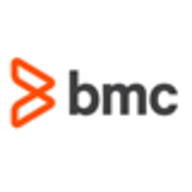


Find out what your peers are saying about BMC, Broadcom, JAMS Software and others in Workload Automation.
| Product | Market Share (%) |
|---|---|
| Control-M | 19.1% |
| IBM Workload Automation | 6.2% |
| Stonebranch | 4.7% |
| Other | 70.0% |



| Company Size | Count |
|---|---|
| Small Business | 24 |
| Midsize Enterprise | 12 |
| Large Enterprise | 112 |
| Company Size | Count |
|---|---|
| Small Business | 4 |
| Midsize Enterprise | 1 |
| Large Enterprise | 29 |
| Company Size | Count |
|---|---|
| Small Business | 1 |
| Midsize Enterprise | 5 |
| Large Enterprise | 22 |
Control-M by BMC is engineered to manage hybrid cloud workflows, offering orchestration capabilities starting at $29,000 annually. Aimed at helping growing teams, it efficiently supports cross-environment scheduling and automation needs.
Control-M offers robust cross-platform scheduling, automation, and integration with applications such as SAP and Informatica. Users appreciate its ease of use with a graphical interface, centralized management, and monitoring capabilities. Advanced features, including Managed File Transfer, automated error handling, and real-time alerts, enhance productivity. The ability to unify workflows and support diverse environments makes Control-M a trusted tool in many sectors. While improvements in reporting flexibility and API integration with tools like ServiceNow are needed, addressing performance issues during upgrades could enhance its value. Offering improved support for new technologies and cloud environments is beneficial, with cost-effectiveness being a consideration.
What are the key features of Control-M?Control-M is leveraged in industries like finance for enterprise scheduling and data management, supporting mainframe, Linux, Unix, Windows, and cloud platforms. It contributes to workflow orchestration and workload automation, improving operational efficiency and enhancing IT infrastructure across those environments.
IBM Workload Automation streamlines scheduling with automation and dynamic workload balancing. It integrates multiple platforms, offering efficient management across diverse systems, enhancing operational productivity.
IBM Workload Automation provides end-to-end control in managing tasks across varied platforms, supporting event-based scheduling and real-time updates. Its intuitive GUI allows seamless scripting and monitoring, facilitating integration with applications like SAP and Oracle. The inclusion of FTA agents ensures efficient local dependency management, while offering versatile scheduling options. Its capability to provide a comprehensive view, manage CPU usage, and meet service level agreements positions it as a valuable tool for large-scale operations.
What are the most important features?Industries such as government, banking, and large enterprises implement IBM Workload Automation for automated scheduling, workload balancing, and batch processing. It assists in migrating from legacy systems to web-based services, integrating with numerous applications, and managing extensive daily job lists. Key functions include offshore management and backend data collection, crucial for effective resource tracking. This adaptability enables organizations to efficiently support operations while scaling workloads as needed.
Stonebranch automates enterprise-level workload and task scheduling across platforms like Linux, Windows, and mainframe, managing thousands of daily tasks for improved efficiency and visibility.
Stonebranch enables organizations to streamline job scheduling by replacing older systems with a robust solution that automates complex workflows, batch processing, and secure file transfers. Its compatibility with multiple platforms and enhanced visibility aid teams in efficiently managing business processes, database interactions, and IT workflows. Equipped with a Universal Controller and Agent, it provides seamless integration across diverse systems, empowering users with greater control over their tasks. While it fosters digital transformation, there are opportunities for enhancements in areas like graphical workflow overviews and API functionality.
What features does Stonebranch offer?Organizations in industries such as finance and healthcare implement Stonebranch for its ability to automate complex processes, manage mainframe and distributed environments, and securely transfer sensitive data. Its platform-agnostic nature caters to the demanding needs of these industries, providing a reliable backbone for essential operations.